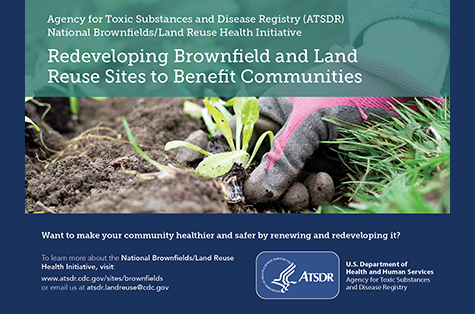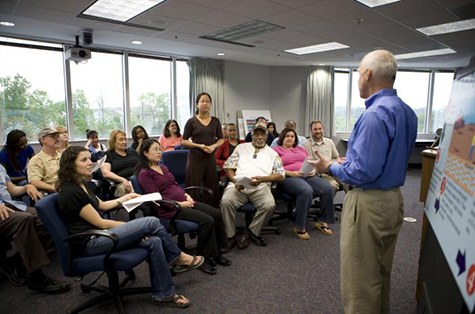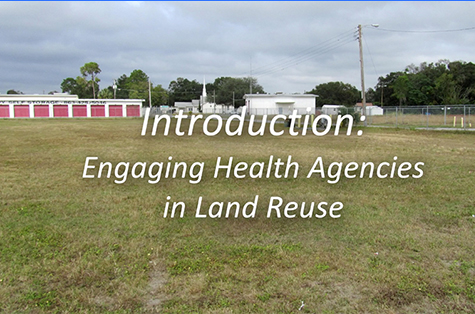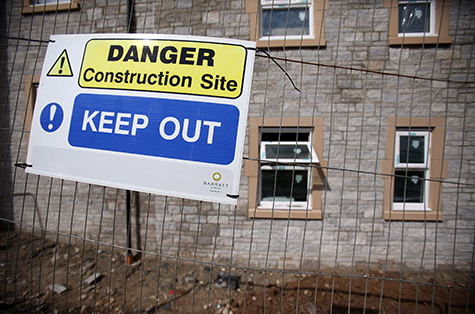ATSDR Land Reuse Health Program
Community health is an important part of land revitalization. ATSDR works to include health considerations in brownfield redevelopment and land reuse.
ATSDR’s Land Reuse Program promotes health, community involvement, partnerships, communication and education.

Brownfield:
The US Congress formalized the definition of brownfields in 2002 through an amendment to the Comprehensive Environmental Response, Compensation, and Liability Act (CERCLA) of 1980 (42 U.S.C. 9601). Under this definition, the term “brownfield site” means real property, the expansion, redevelopment, or reuse of which may be complicated by the presence or potential presence of a hazardous substance, pollutant, or contaminant. There are some exclusions to the definition of “brownfield site”, such as facilities that may be placed or are listed on the National Priorities List (i.e. Superfund sites) or subject to corrective action under the Solid Waste Disposal Act, among others (United States Congress, 2002).
Land Reuse Sites:
ATSDR includes brownfields as a type of land reuse site. Land reuse sites are sites that are slated for redevelopment but may have chemical contamination. In other words, land reuse sites include brownfields plus those sites that are exempted from the 2002 CERCLA amendment, such as Superfund sites.
- Overview
- Videos
- Healthfields Tools and Resources
- Environmental Health and Land Reuse Certificate Training
- Infographic
- Resources and Partners
- For Health Agencies
- Brownfields Network (BROWN)
- BROWN Community Partnerships Project
- Conferences
- Publications and Fact Sheets
- State, Tribal, and Local Success Stories
- Redeveloping into a Healthy Community
- Success Stories
ATSDR’s National Land Reuse Program: Resources to improve community health
You can obtain copies of:
- videos,
- the site tool,
- the community mapping version of the site tool,
- and other resources
by contacting us at atsdr.landreuse@cdc.gov or, for the tools, by using the links.



